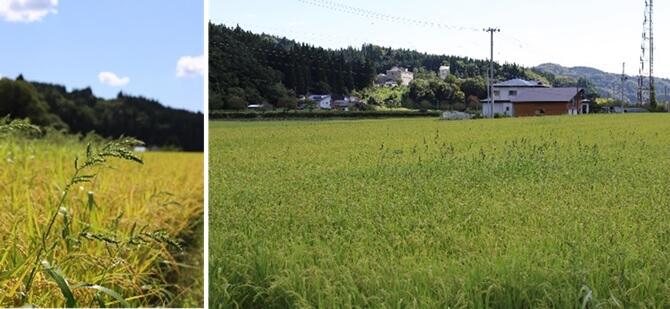Echinochloa phyllopogon, a weed that grows in rice fields, has generally been managed using herbicides. However, its resistance to several herbicides has been discovered in recent years. As other populations of E. phyllopogon have been found in agricultural areas other than rice fields, the future agricultural damage caused by these weeds is of increasing concern. The Kazusa DNA Research Institute, in collaboration with Kyoto University and Akita Prefectural University, has achieved the high-precision sequencing of the entire genome of E. phyllopogon, which is resistant to multiple herbicides. The results showed that its genome has a complex polyploid structure (i.e., more than one complete set of chromosomes), with one genome containing 32,337 genes and the other containing 30,889 genes. Based on the genetic information obtained in this study, progress is expected to be made in understanding the causes of herbicide resistance in the weed, as well as in the development of new herbicides and appropriate management methods. The results were published in the journal DNA Research.

Provided by Kazusa DNA Research Institute
Owing to the enormous damage caused by weeds, they have to be controlled through various measures, including herbicides. E. phyllopogon looks similar to young rice plants, meaning that it is difficult to visually distinguish it from rice, and so must be controlled using herbicides. However, there have been reports of previously effective herbicides becoming ineffective, and some cases of multidrug resistance have been found where several different types of herbicides are ineffective. Additionally, an unprecedented subspecies of E. phyllopogon has been found in non-watered environments in Japan.
Basic genomic information is needed to prevent agricultural damage caused by E. phyllopogon and to control its spread. However, its genome is difficult to determine because the species is an allotetraploid. That is, when different species interbreed, the genomes from both parents are retained and the offspring genome is thus doubled. With recent advancements in the development of genome analyzers, it has become possible to determine long genome sequences more accurately. As a results, the research group had made a new effort to sequence the genome of E. phyllopogon.
Using state-of-the-art long-read sequencing equipment, the team succeeded in achieving end-to-end sequencing of most of the base sequences (a total of 1 billion base pairs) of the 18 chromosomes of the multiple herbicide-resistant E. phyllopogon. This is one-third the number of base pairs in humans.
The results showed that the allotetraploid E. phyllopogon consists of two genomes: one with 32,337 genes comprising 453 million base pairs, and another with 30,889 genes comprising 520 million base pairs. Additionally, the E. phyllopogon found on dry land is possibly a hybrid between a subspecies that grows only on Hainan Island in China and a Japanese subspecies.
It is hoped that this genomic information will help toward the identification of the cause of herbicide resistance in E. phyllopogon, the development of new herbicides, and advancing the development of appropriate crop management practices. Comparing the genome information with that of other organisms may reveal not only the characteristics of Echinochloa phyllopogon, but also its past history, such as how it evolved and spread across the globe.
This article has been translated by JST with permission from The Science News Ltd. (https://sci-news.co.jp/). Unauthorized reproduction of the article and photographs is prohibited.




